Digital Frontier
Header
Main
CG MAKING
The Boy and the Beast
July 2015 [CG]
CG technical team supporting the world of Hosoda’s works leads the next generation Japanimation
CG technical team supporting the world of Hosoda’s works
[Effects Unit]
In charge of CG visual effects, responsible for wide-ranging effects including the flaming character of the opening scene, smokes and explosions throughout the film, the blow of the whale and water droplets. Mr. Matsui and Mr. Ito join the interview.
[3D Background Unit]
Created cuts involving 3D camera work requiring 3DCG modeling and implemented compositing work. Mr. Harikae joins the interview.
[Composite Unit]
Responsible for the compositing work on the entire cuts. Tasks are divided within the unit, and the generalist team primarily handles compositing. They also have temporary filming support from the animation production company. Mr. Kawaguchi, Mr. Morita and the director who joined to support this unit, Mr. Shimozawa and Mr. Ikeda join the interview.
From mob placement to comp
Compositing is the filming of animation and DF handles the CG work not only on the background, 2D, and 3D compositing, but also on vehicle animation and mob positioning and simulation on Maya. As a mob requires placement of many people, there are significant layer hierarchies. In the Shibuya crossing scene, for example, there are meticulous details such as people moving about inside buildings. In this film directorial techniques such as the ambiance of nighttime neon lighting in Shibuya and the out-of-focus lens effect are often used and were a key process in which compositing influences the impression of the screen.
From a 2D background to 3D
There are many street scenes in this film and all moving parts (where the camera pans in) were created in 3D. Pieces of artwork supplied by the art department were cut and pasted as the mapping information for the each part. Although the artwork was not as complex initially, DF processed it using PhotoShop for more realistic imagery. By this scene, they had been accustomed to retouching work, but in the beginning they were unsure how much processing should be done on artwork created by the artists.
The scene of explosion under the overpass – Effects with toon elements
One drawing was cut into two for the overpass for a jarring effect. The effects team handled the vibration of the steel frame.
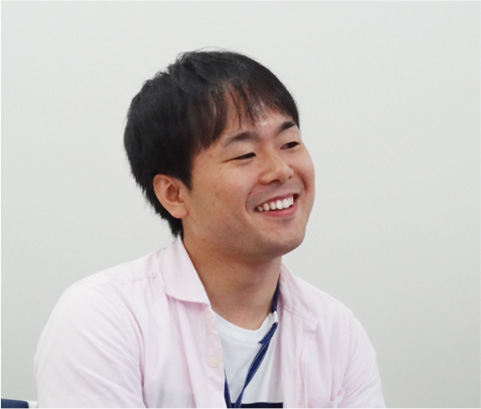 Composit Sub-lead
Composit Sub-lead
Satoshi KAWAGUCHI
It was originally going to be an epic explosion, but as we worked on it, we decided to tone it down slightly. If you make it look serious, it becomes too grim of an action, so I considered whether to process it as such. The director gave me a keyword, “festive mood”. Something like fireworks. We must be attuned to the director’s subtle nuances such as this one and work to convey it. We tried adding sharp light to make the scene more anime-ish, something that did not look like flame nor smoke, as well as textures with cartoonish elements. We were given realistic raw materials to work with, but in full CG, they would have been overly detailed. We must be creative to hit the right balance. The explosion scene was composited based on the information on smoke alone. We determined that smoke alone is fine as we worked on the composite and told the effects tem that we would take care of the colors if they could come up with materials to determine the tones. We intentionally did not use the flame material for the one under the overpass. The trees lining the street had to sway with the blast, so they were separated. This scene turned out to be one with many layers.
The director gives us keywords and a real challenge is figuring out how best to reflect them. He wrote “dreamy” for the whale scene in the storyboard… Of course, we discussed it in a meeting, but I thought long and hard about how to convey “dreamy” in the way the director wanted.
The stadium
In the aerial shot scene, the background art was projected onto the 3D model in the very first frame. Although for the most part this was created in a similar fashion as the allies in Shibuya, there was no panning-in with the camera, so it was easier in that respect. But we encountered drawing errors, like an image that flickers with mob’s movement, and the compositing work was hard. And the camera angle did change a lot. We had the stadium modeling data that Anri Kamijo from the art set-up team created using SketchUp (simplified 3DCG software), so all we had to do was retouching the gaps and adding fine details. The model we received had had small parts built into it, and sections that would be okay as plane polygons were processed as plane and for sections that had change in perspective as the aerial camera moved across (such as the trees lining the streets and team flags), a polygon board was placed.
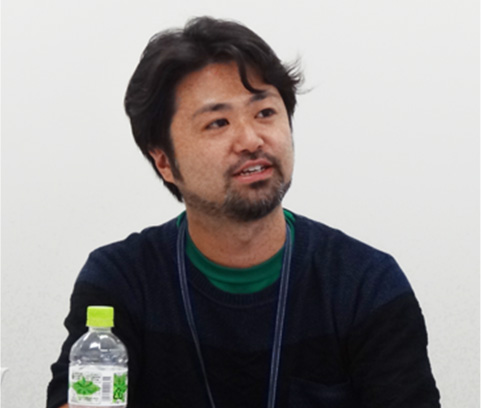 3D Background Lead
3D Background Lead
Tsubasa HARIKAE
The background inside the stadium was mostly CG. It wouldn’t match the 2D layout and the shape of the stadium had to be modified in keeping with the layout, so we asked for a few patterns or forms. It tuned out that this was quite a grueling task. This also happened with Summer Wars. We made the equatorial belt a straight line rather than circular to use in OZ. It is uncommon to modify shapes of buildings with full CG. Perhaps this is unique to animated films. They do mesh better with 2D images, while also creating a sense of depth. Despite the modification, they look natural, in other words, they don’t stand out so you don’t notice them.
Generally speaking, the background in stadium cuts is all 3DCG. The material we received in advance for art parts was texturized for production. Artists’ drawings were used untouched as a Book (layer) only near the foreground. DF decided the camera position based on the layout, and composites were made by placing the camera and mobs for all cuts.
A camera placement map was created so that the team could share the relative camera positions because there were many cuts for the battle in a circular field and you could loose track of the camera positions. This was checked by the staff working on mobs to confirm character positioning. Originally, this duel scene was supposed to take place over a long stretch so we prepared the setting for lighting (the movement of the sun) as well. The sun rises in the east and gradually moves across the sky and the scene ends in the evening. We had to check the positions of shadows and determine which way was north. When you are working with CG, you can’t help but pursue realism. We ended up not using this lighting, but it’s as if you are not satisfied until it all fits. In some cases depending on the cut, we submitted a first-issue drawing to which the artists matched their drawings.
Capturing the visions of the director –
Difficulty of visually reproducing them through group work
Center Gai in Jutengai, a parallel world of the human realm
We toiled for a long time in deciding on the camera movements. The scene where the camera moves under a shrine gate is quite impressive, but it was difficult to capture the idea in the beginning. We discussed how challenging it would be to move the camera under a shrine gate, as might be expected. The idea was that we would approach the “Jutengai” sign and reach the other side, but we ended up with an impression of the camera moving towards the sign and pulling away from it on the other side, or we could not quite get the front-and-back continuity and it looked as though it was playing in reverse. We experimented with different approaches based on the direction to make it look graceful. We fine-tuned the speed of camera movement so that the audience wouldn’t feel motion sick watching the film.
Flaming dance of the star performer:
The first cut before the title scene where everyone in the theater becomes captivated by the screen
There was much manipulation in the opening scene. Data for the action of Kumatetsu flying towards the back could not be created by motion capture, so it was all done manually. Actor data only formed the basis, so we spend much time adding animation. The animation team handled the motions. Then the effects team added the flames and sparks and small flames were incorporated in the composites.
This scene was long. There were mobs of bodies, so rendering was quite time consuming. However, the opening scene was going to be used for the campaign released late November of last year, so we worked on a very tight schedule. The flames were first created using FumeFX, a 3dsMax plugin. I was comfortable with the tool, so my experience with it helped. A 3D model was created for the sward and the flame was created from this model. The problem was that when the sward was brought down, it went ahead, leaving the flame behind. Because of the fast speed of the motion, the flame simulation fell behind. This made quite a pathetic picture and techniques were needed to balance the furiousness of the flame.
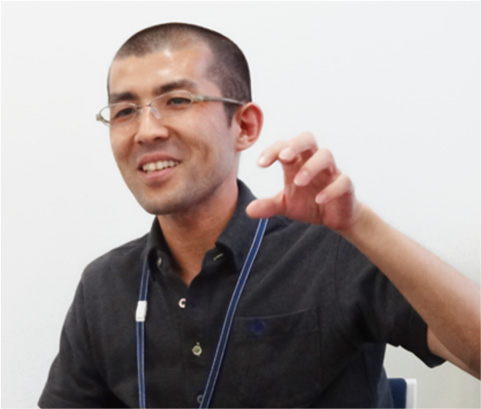 Effect Lead
Effect Lead
Gen ITO
Sparks were added as a separate element and the flame’s realness (amount of light) was augmented in the composites. Ikeda took care of compositing all of these.
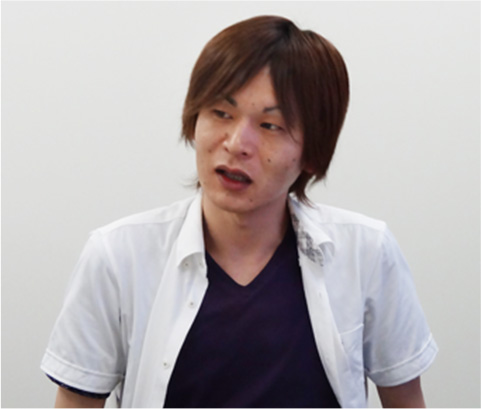 Effect Lead
Effect Lead
Takahiro MATSUI
I think these may have been the most complicated composites in my CG career (laughter breaks out from the staff). It was a long scene with many elements, which meant that compositing was very complex with countless layers. To top it off, it was hard to get the rhythm right. Scenes flowed seamlessly one after another. The opening was one cut. Here, the front stage was fully described so in terms of length, it was about two minutes. It was a real challenge to work on the entire length. Effects and everything else all had to come together and this was a test of everyone’s creativity.
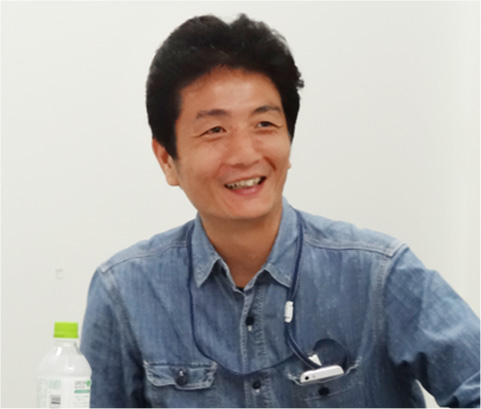 Composit Lead
Composit Lead
Masanori IKEDA
Retake at the very end
There was a last-minute director’s edit to change the flame color of the sward in the climax. Rather than simple flames, the director wanted an aura-like impression. At the time, the flames were supposed to be orange through to the end, but just as we were about to finish, he said, “maybe flames aren't the way to go”. So I had to explain the change to everyone and quickly delegated the tasks for the cut and started working on it. The retake was actually ordered the day before it was scheduled to be delivered. It really came at the very end. The staff also felt that the work had already been finished.
At that point, it was too late to change the material, so we had to somehow make it work with compositing.
And it was the biggest tear-jerking scene as well.
Kyuta was also originally orange, not pink. We weren’t getting any more celluloid pictures, so Horibe decided on the cel colors and we changed the colors on composites.
The whale scene
The whale itself is surreal without substance. Horibe researched the plankton/sea sparkle that luminesces when stimulated, and we used it as a guide to develop the look. For the body of the whale, we had a surreal, jellyfish-like image in mind.
We further discussed this image with the director. We found a video of the sea sparkles luminescing were there were waves, so we asked for a splash and other effects based on this reference video.
We used Houdini for the main blow of the whale. It was a quite long scene with many cuts, so I figured it would be better to change the way to approach this and prepared it so that effects work could be done efficiently.
The testing phase material was fairly close to the reference video, and we needed to tone down the realness of CG and make it more like animation. We asked Shimozawa from the composite team for editorial supervision on the level of details to be left in.
If untouched, this type of material really shows its details. We changed it to an organic material that was more watery but not quite water, while making sure it did not look full CG. There was a request for particles that looked like fireflies, so we avoided materials with textures. Like the explosion scene, we selected details like velocity and where the light is coming from and picked fairly monotone materials to zero in on parts that paired with the level of animation details. But this balance is hard to achieve and even more so when our aim was not to reduce the amount of details in composites so that they would look 2D. They inevitably look cheap if you simply pare down the details. We still wanted to keep the same level of density, so we experimented by trial and error. It’s an abstract thing, so you can’t avoid this kid of uncertainty. We asked the effects team for many retakes of the movement of water droplets that fall on the character. We made sure that the movement matched the mood or character’s emotion.
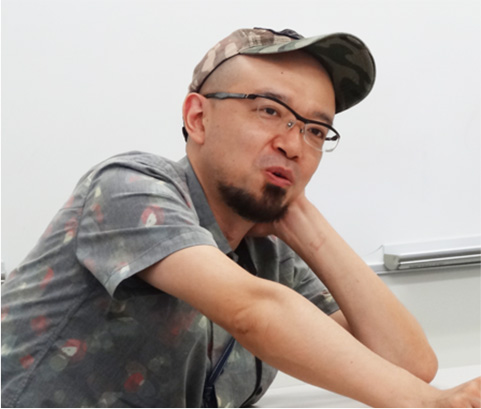 Composit Lead
Composit Lead
Yohei SHIMOZAWA
We did not want it to be realistic, but to go further along another vector, so it was challenging to achieve exactly what the director envisions. We didn’t reach the solution immediately; we finally got there after a few exchanges. The director may have had a dreamlike vision, but it wasn’t as though there was something concrete to grasp, so I had to trust myself with what I thought would be good. We were creating something that no one had ever seen before.
The director was also wavering until the end about how everything looked. That is hard to communicate with words. And you can’t explain where and how something isn't right. So we had no choice but to work though the problem by trial and error until we got it right. In the beginning, we didn’t know anything; whether the color of the whale was supposed to be blue or green, or whether there was some substance to it. The character team created the shimmering of the whale’s surface, which was agitated by the composite team. Variations were created in its movement. We added spray-like material, luminescent particles, something that pulled on its tail, and a spray material in a green tone to give color variation. This whale was born out of numerous elements. It is really a fruit of DF team’s effort. To achieve a level of quality so there would be no disharmony between the CG and drawings, and to make the CG right for drawings, that is all that matters.
Lastly, Ms. Takami Okamoto, an assistant production manager for the production management unit that oversaw the entire production, joins the interview.
What is the role of production manager (PM)?
The PM’s role is to oversee the progress of production. Generally speaking, the main jobs are external liaison and project management. On the production side, I believe this position has the most interactions externally and I attend meeting with the director along with Horibe and others.
She helps us prepare for meetings. For instance, before heading to Studio Chizu, I give her a data sheet I created to be checked that day and she prepares copies to take with, things like that. She is dependable.
For example, if are heading out at 4 o’clock, internal checking continues till the last minute and then I quickly make copies of what has been approved. Sometimes, I wasn’t ready when we were supposed to leave, so Horibe and others had to go ahead and I showed up later with the material. Data is sent over the network, but sometimes it takes time for the receiver to download and confirm it, so I try to take the media containing checked data with me as an insurance. What we don’t want is to make the director wait.
The director never forgets to thank his staff. Of course he rejects our work sometimes, but when he is pleased with it he is generous with his compliments.
When I deliver his compliments to the designers back at the office, they get excited. Their tension soars and everyone becomes even more motivated. As a PM, I receive the director’s messages directly and I get to deliver his messages to the staff. I think that’s the best part of being a PM for the production team. In reality, it’s more like I’m running around and out of breath just so that I can finally hear the director’s words [laughs].
We often get emotional instructions from the director. I listened to him thinking that he had a picture in his mid. When he used non-concrete words to describe his vision, I thought he might be trying to inspire everyone, but they were also difficult to interpret. Horibe takes home those words and always mulls over them [laughs].
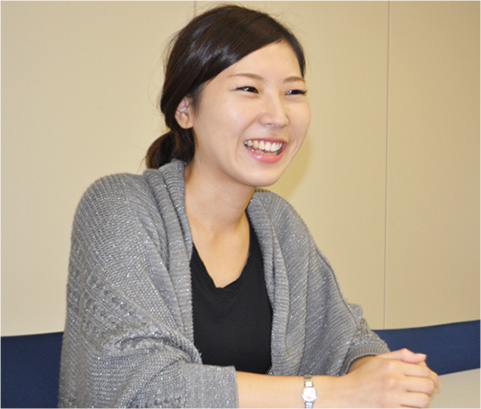 Assistant Production Manager
Assistant Production Manager
Takami OKAMOTO
Memorable retake of the climax scene
There were edits to be made for the part everyone thought was the biggest challenge. It was a cut with a major CG component and everyone was waiting nervously. And then a retake order… We were thrown into a commotion. The director knew the schedule, so we were mostly expecting an okay, and not anticipating a retake at all.
It was the last day to have the editorial room, so we only had one shot to do the editing whether we liked it or not. When I returned to the office I quickly came up with an idea for change and created a QT and sent it over. When I checked with the director, he said, “let’s try this” and then we ran detailed checks. The next day we presented the scene, I was so relieved when I heard him say, “Ah, this is great!” It was the climax, the most crucial scene, but Hosoda’s films are always produced from the beginning according to the sequence of the script, which naturally means the climax scene is created at the end. So we can’t avoid situations like this. I should say that in previous films we had never been under such pressure.
Communicating with people in the animation industry
Sometimes, I got questions like “what is line footage?” and I had to explain the animation industry lingo to our staff. Also, simplifying our conversations with Studio Chizu’s when communicating them internally was one my important roles.
My reason for joining DF was to be involved in Director Hosoda’s films. Even though I was not part of the team from the beginning, I was lucky to have been put on the project at the height of it. I am extremely grateful for having my dream come true and at the same time being able to have the first-hand experience.
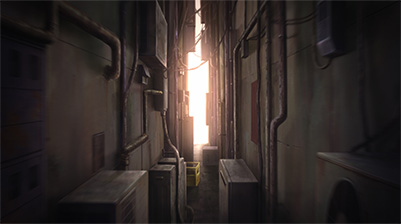
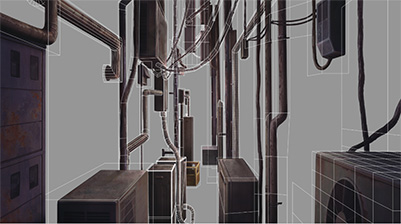
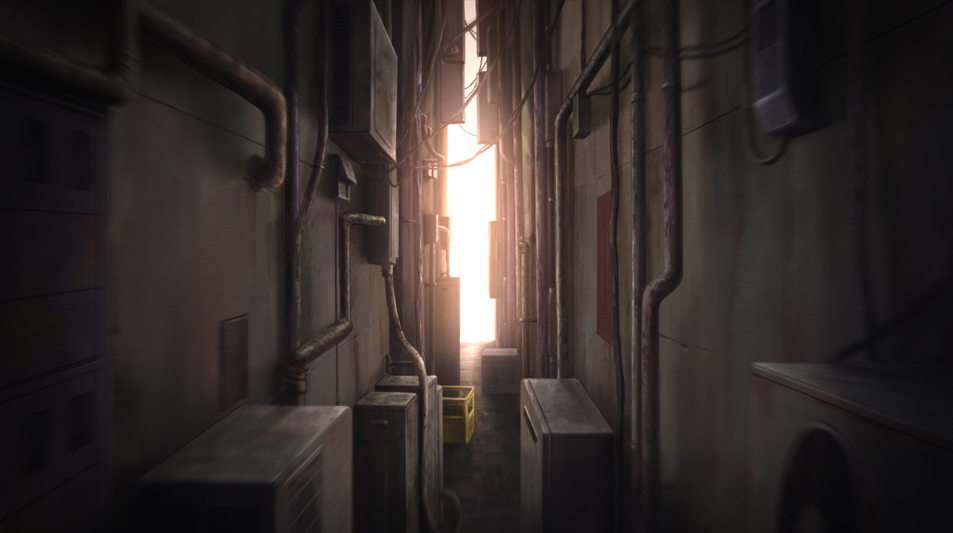
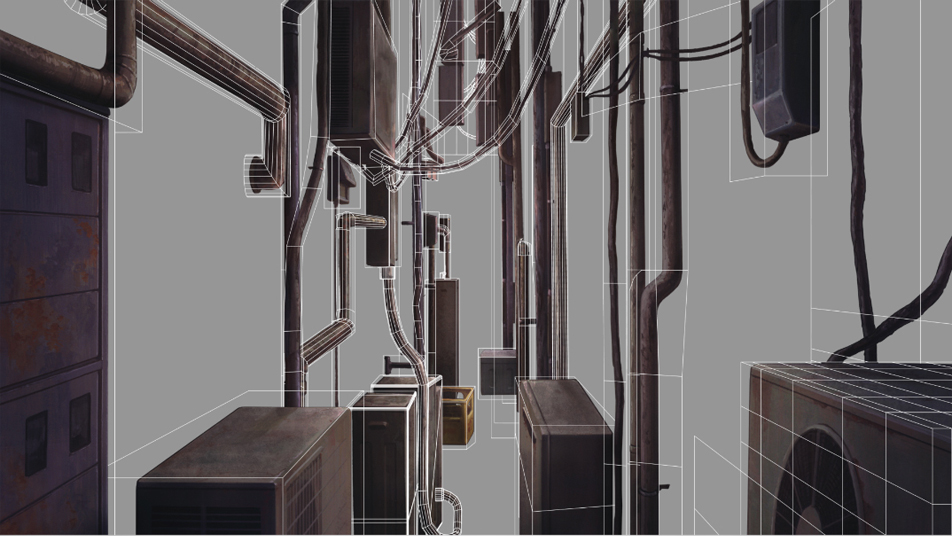
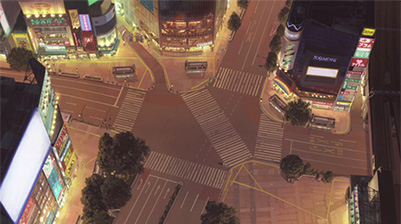
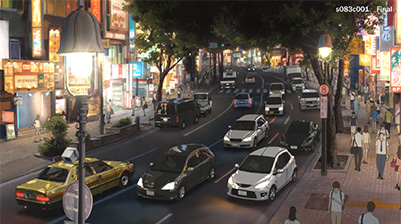
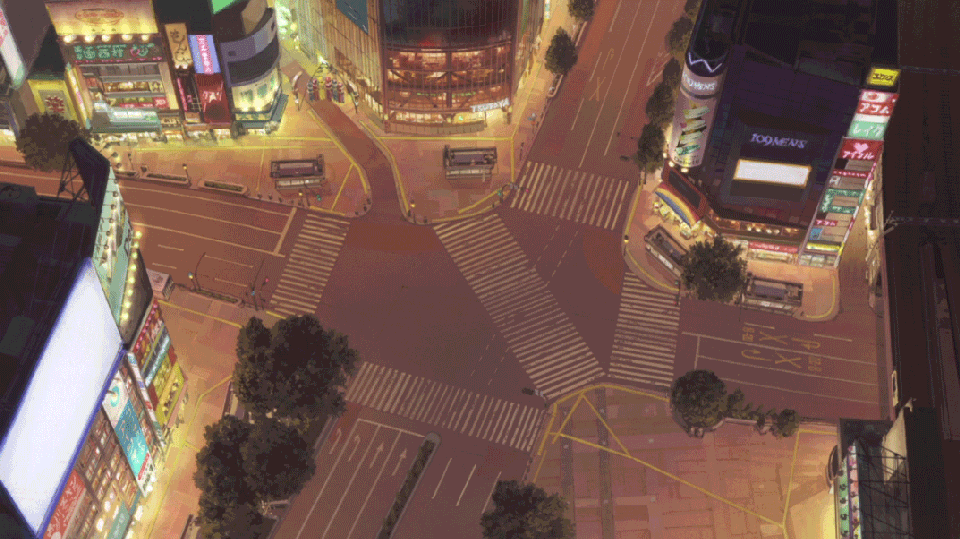
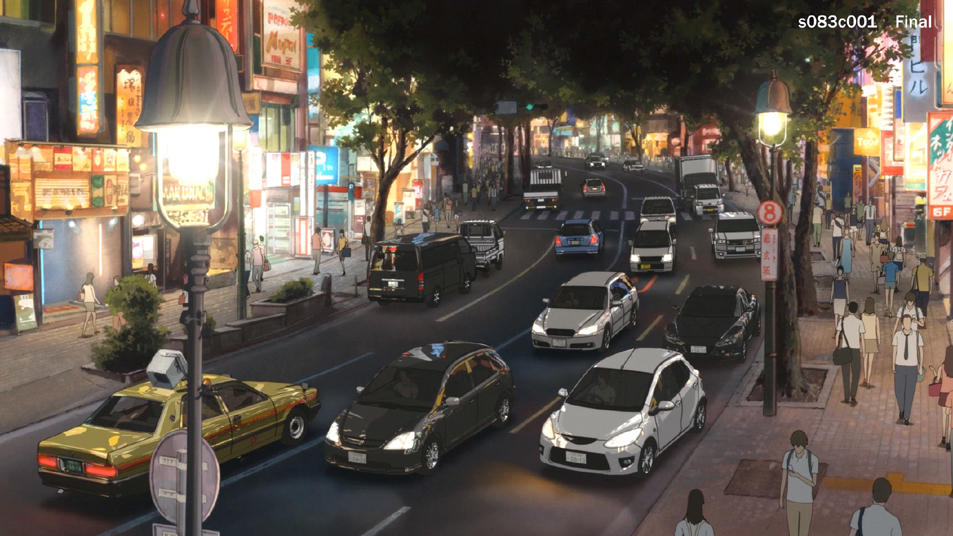
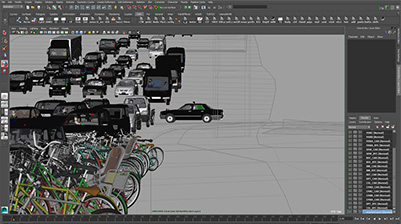
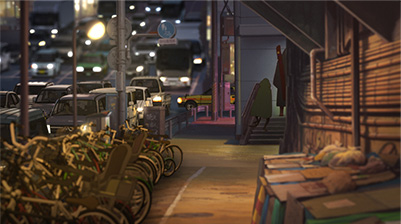
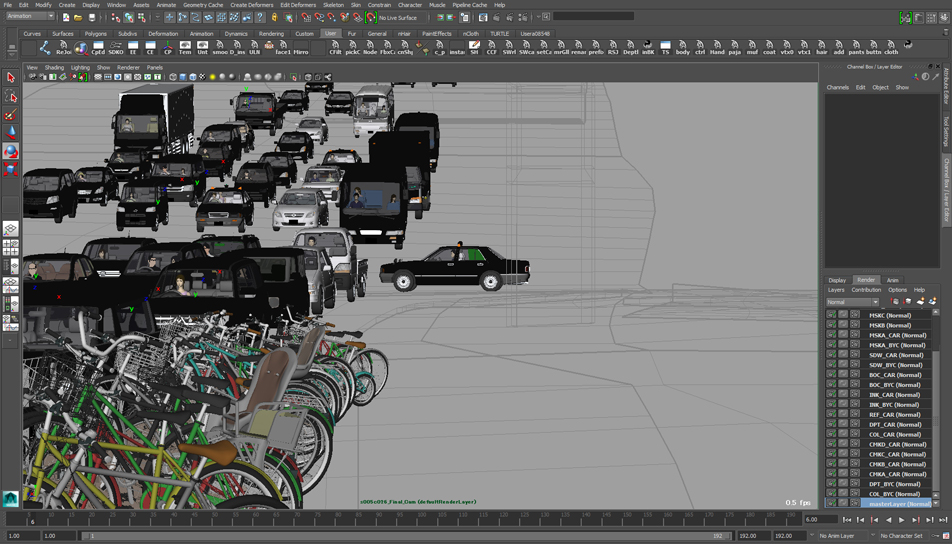
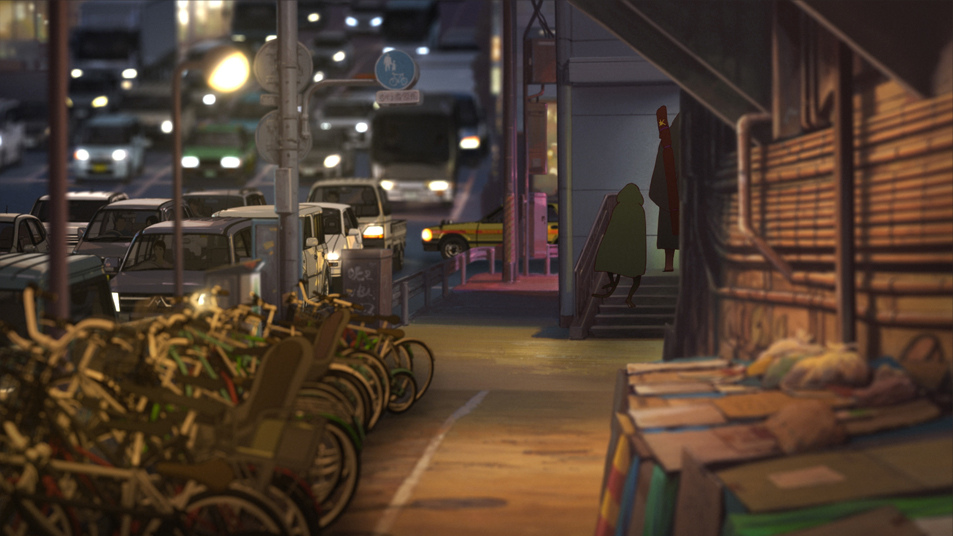
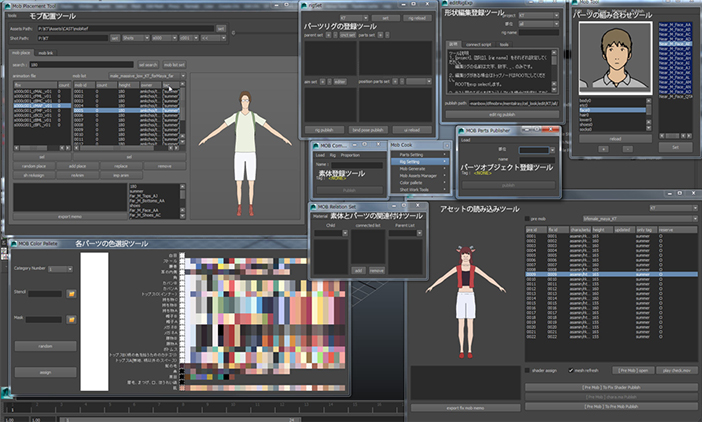
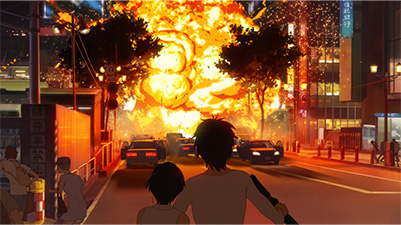
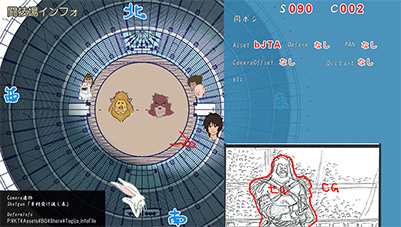
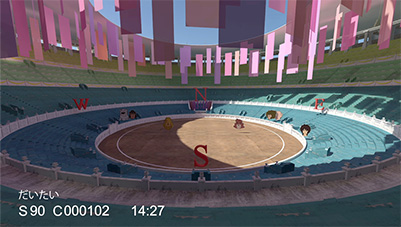
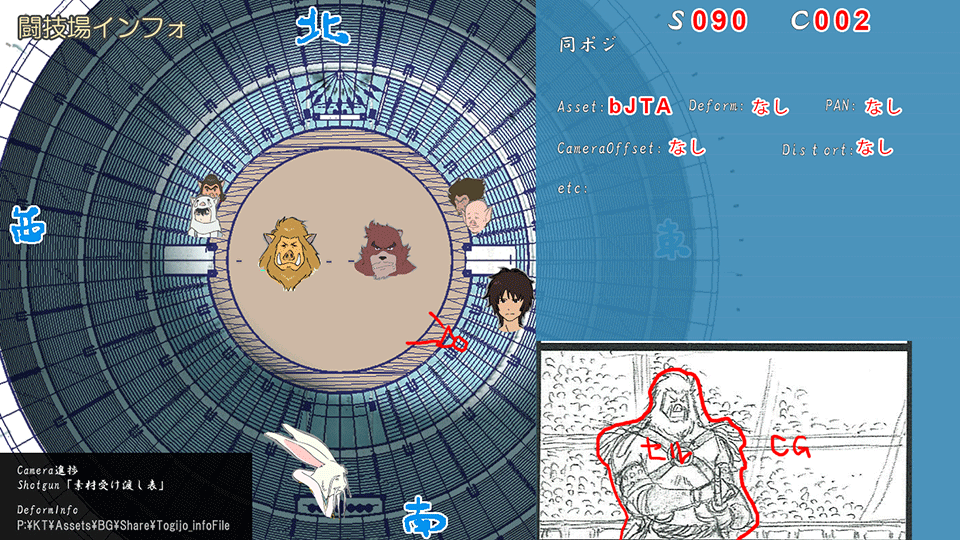
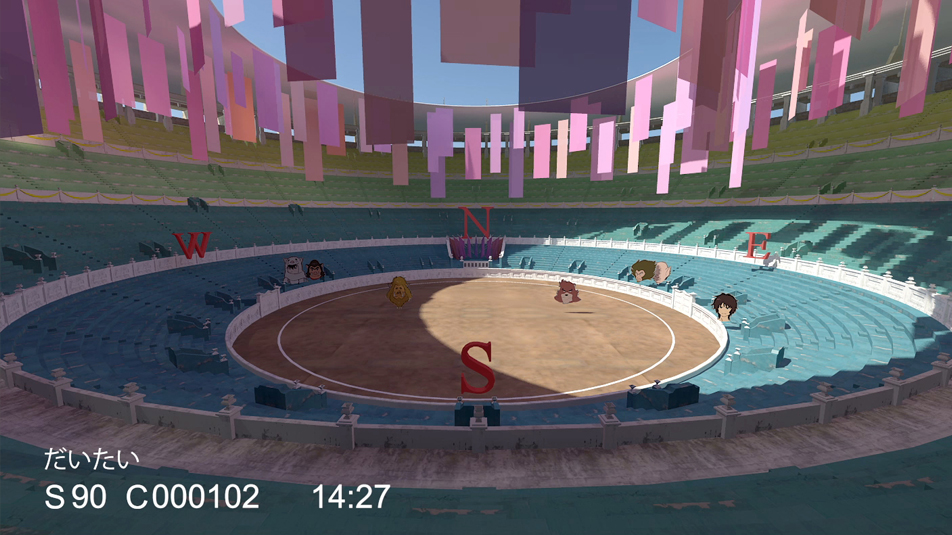
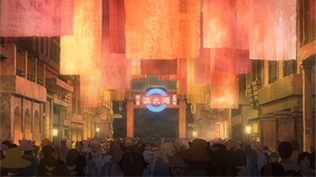
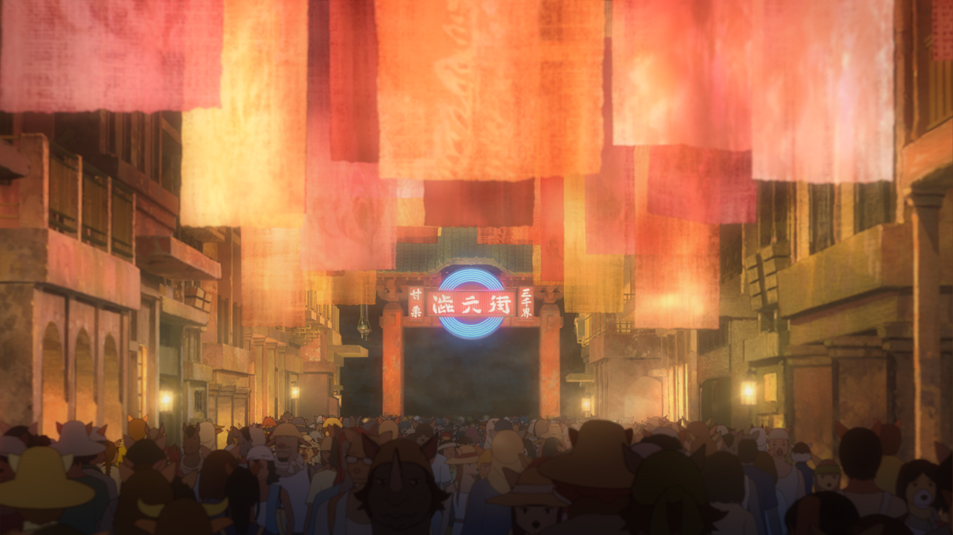
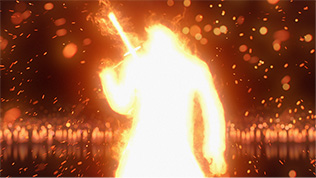
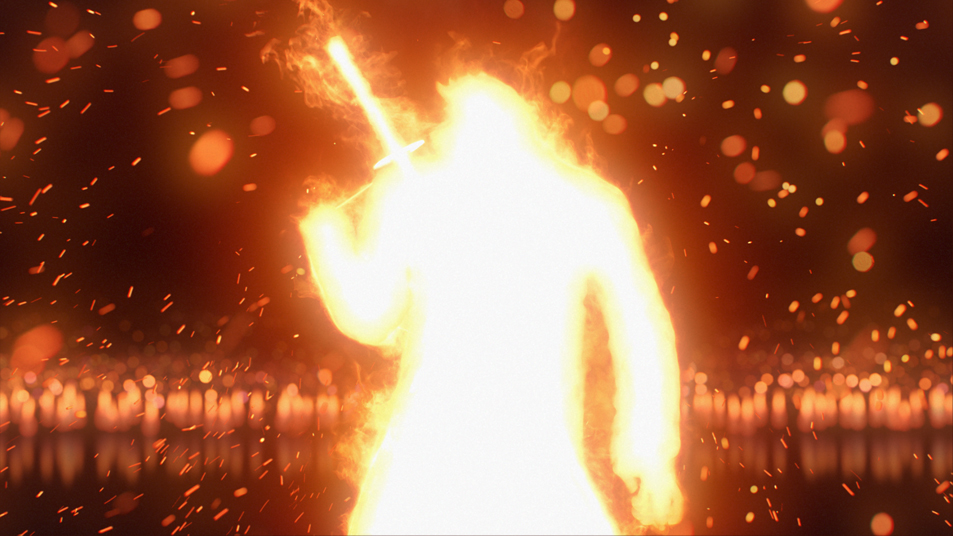
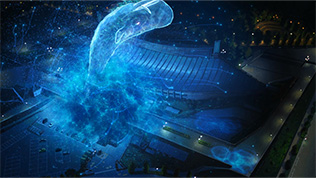
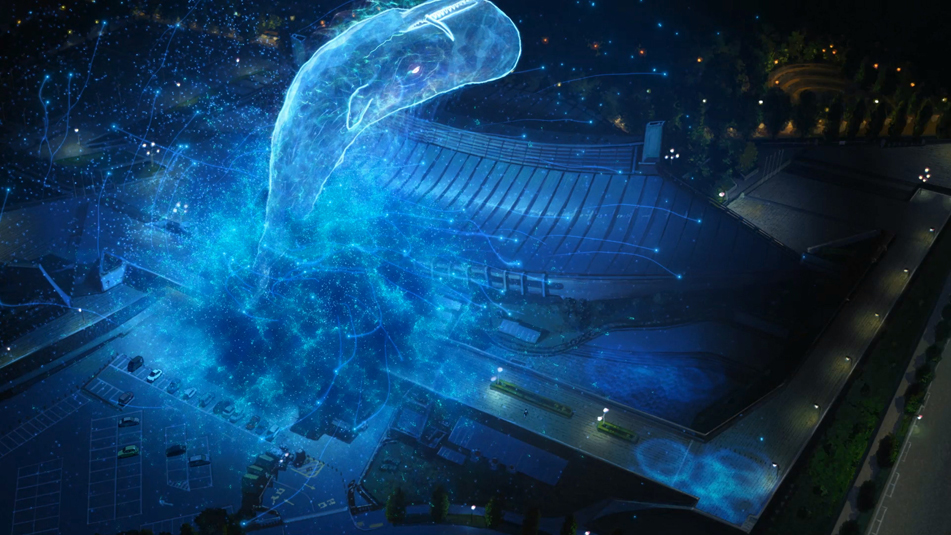
Yasuaki MORITA The shadow of the whale, crowd of people, a train that passes by were composited onto a background image supplied by the art department. Much of the parts were transformed into a digital book (separated into layers) in anticipation for the compositing work. For example, to get accurate positional relationships, street lamps, traffic signals, trees lining the street were layered when placing a mob. A CG whale can also be placed under the white lines of a pedestrian crossing.
Mr. Morita from the CG background unit specialized in cars and bicycles. There were scenes of Shibuya in 1997, 2006 and 2015, so three different cityscapes were needed. As for vehicles passing through the intersection, he consulted a list of vehicles for each decade and selected models that would not seem out of place in a particular period.